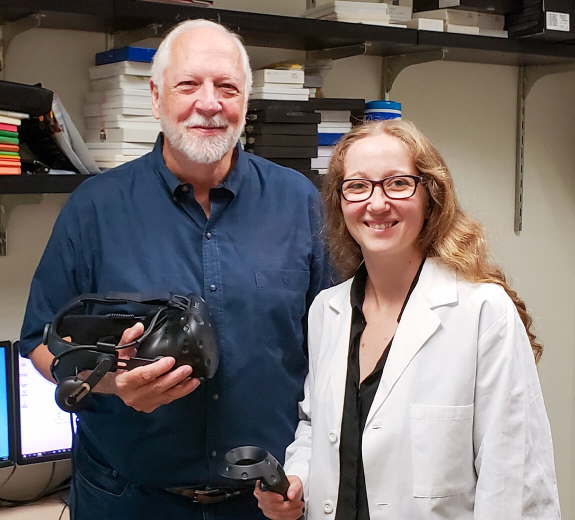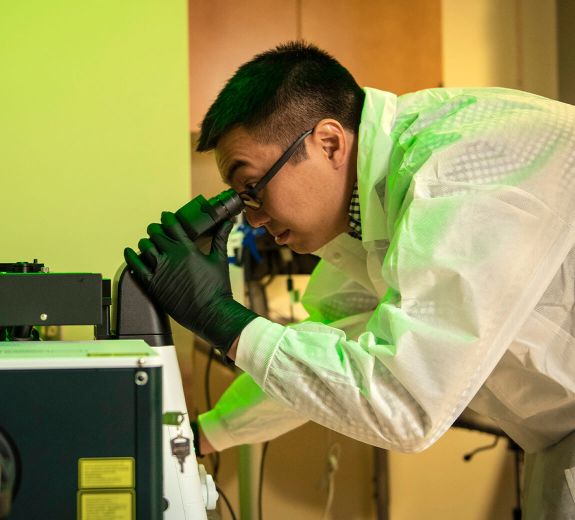When Skillman shared this idea with Caroline Stefani, PhD, a senior postdoctoral associate in the Lacy-Hulbert & Stuart Laboratories, she was intrigued — and her expertise in 3D microscopes made her the perfect research partner to help create this VR technology.
Fast-forward three years, and Dr. Stefani and Skillman (BRI’s former director of research technology who now leads his own company, Immersive Science) are making the technology even more powerful — through a grant from the Bill & Melinda Gates Foundation and a partnership with Yongxin (Leon) Zhao, PhD, at Carnegie Mellon University (CMU).





